FOR MEMBERS AND WILDLIFE LOVERS
SUMMER 2024

FOR MEMBERS AND WILDLIFE LOVERS
SUMMER 2024



MY ZOO with Josh Widdicombe

MONKEYING AROUND

PREDATOR PROOF
Kenyans living with wildlife

ZSL Member Luke Capeling captured this incredible image of a Chinese crocodile lizard on a visit to London Zoo.
Chinese crocodile lizards live by streams and freshwater pools in the thick, mountain jungles of southern China and northern Vietnam.
“They spend a lot of time basking on overhanging branches, waiting for their prey – tadpoles, small fish and insects. But they are also strong swimmers, using the crocodile-like tail that gives them their name to power through the water,” says Kim Carter, Zookeeper at London Zoo.
There are thought to be just 1,000 crocodile lizards left in the wild, with so much of their habitat now lost and many wild animals caught for the pet trade. The species is classified Endangered, which means there is a very high risk of them going extinct. Meet the rare Chinese crocodile lizard in our new conservation centre at London Zoo, The Secret Life of Reptiles and Amphibians.
Wild About is the magazine for Gold Members, Fellows and Patrons of London and Whipsnade Zoos
London Zoo, Regent’s Park, London NW1 4RY
Tel: 020 7722 3333 zsl.org
Registered Charity No. 208728
For more information about Membership, please contact our supporter contact team on 0344 225 1826.
Editor: Jonathan Kemeys
Design: Suzie Black/Alliance Creative
Cover image: © Amber Rainsford wildabout@zsl.org
With thanks this issue to: Will Amlot, Rebecca Blanchard, Tina Campanella, Tyrone Capel, Luke Capeling, Joe Capon, Rosie Crowther, Gemma Dipple, Hannah Eaton, Emma Edwards, Hannah Fisk, Sarah Forsyth, Matthew Gould, Charlotte Gurden, Joy Hadfield, Patrick Lally, Jim Mackie, Amy McKillop, Jamie Mitchell, Monica Musyoki, Carolin Pockrandt, Jessica Ray, Amanda Robinson, Natasha Roche, Fiona Sach, Vicki Sage, Ben Tapley, Josh Widdicombe, Olivia Wilson-Holt.
Wild About is printed on paper certified by the Forest Stewardship Council (FSC) and contains elemental chlorine free (ECF) fibre, which comes from wellmanaged forests. Your copy of the magazine is sent to you in a recyclable envelope. Wild About is published three times a year and distributed to Gold Members and supporters. No part of Wild About may be reproduced or used in any form or by any means, either wholly or in part, without prior written permission from ZSL. ZSL cannot guarantee the return of unsolicited articles, photographs, etc. ZSL reserves the right to refuse an advertisement without explanation. ZSL does not necessarily endorse any of the products or services advertised. When you have finished with this issue please recycle it or share it!

ZSL is gearing up for its 200th anniversary in 2026, and we got the best possible boost for our celebrations when HM The King agreed to be our Patron, continuing an unbroken tradition stretching back almost to our foundation.
We would love you to be involved in our bicentenary. In particular, we want to hear from you about your memories – from visiting the Zoos as a child, to training to be a scientist in the Institute of Zoology, to do doing conservation with us in the field. We’ve recently launched our History Hive project to gather memories, and any memorabilia you might have picked up on the way. These will all go into an exhibition and a digital archive for our bicentenary. More details about how to submit to the History Hive on the next page.
This issue of Wild About also celebrates some of the births across London Zoo. If you’ve not already been down to meet our two gorilla infants or our three lion cubs you should definitely schedule a visit. As well as being impossibly cute, each of these births is a big deal for conservation, helping to ensure these extraordinary but highly threatened species do not go extinct.
I find the dynamic between parents and children a joy to watch. Raising a child enriches the lives of parents like almost nothing else. Creating the best possible environment for these animals to raise young successfully is a complex challenge, and we’re
constantly researching and learning. One of the many people involved is our Animal Behavioural Specialist, Jim Mackie, who is interviewed on page 9. It’s a mark of the expertise and dedication of our zookeepers and veterinary team that we’re able to contribute to the international conservation breeding programmes for so many rare species.
On page 18 you’ll find a story about the Extinct in the Wild species that we care for at our Zoos. These animals have completely disappeared from the wild, often because of human activity, and survive solely in our care in zoos. It’s hard for us, as a species numbering some seven billion, to contemplate how fragile a population of just 188 is – the number of Socorro doves left in the world, many of them at London Zoo.
Thankfully, we’re working to put that right by restoring these species to their wild homes. With our world-class Zoos, and conservationists working around the world, it’s something ZSL excels at, and it’s one of the areas of our work that I am most proud of.
I hope you are proud too – without your membership and support none of this would happen. Thank you.

Matthew Gould CEO, ZSL

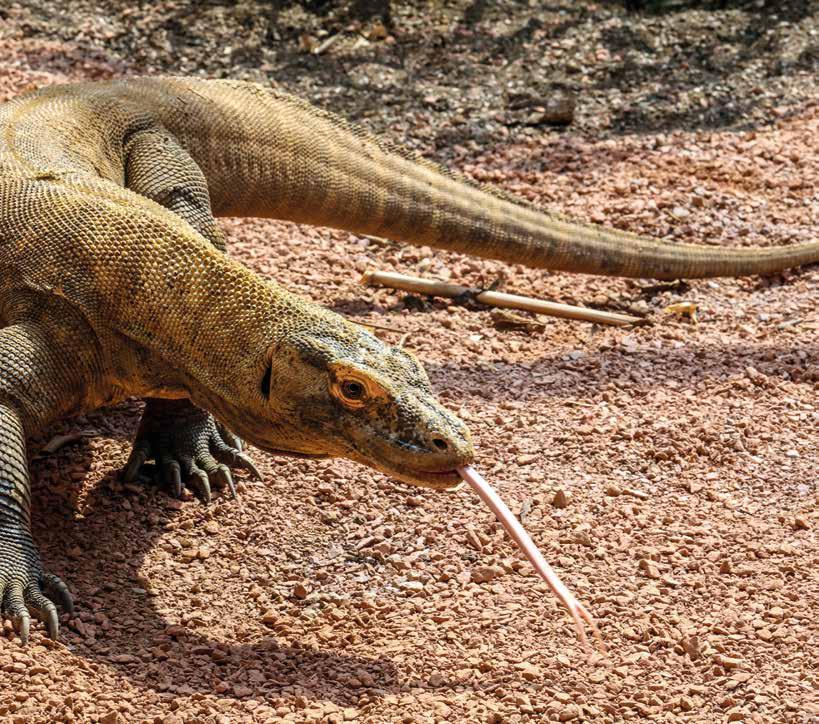
Step aside Wolverine and Ironman, it’s not just comicbook superheroes who manipulate metal to enhance their powers. A new study has shown that Komodo dragons have iron-coated teeth. The study, which involved expertise from our reptile team and samples from our dragons, found that iron is concentrated along the cutting edge and sharp tips of their teeth, and is thought to make them more wear resistant.
Komodo dragons are the largest living lizard, and dental scientists are using them to learn more about the teeth of our dragons’ extinct ancestors – the dinosaurs. Komodo dragons share similar characteristics, like the shape of their teeth, with theropods (the name for a group of predatory dinosaurs that walk on two feet, like the T. Rex). However, scientists are yet to work out whether dinosaurs had metal coatings on their teeth, like Komodo dragons.
Dragons aren’t the only animals to have iron-coated teeth either – crocodilians, beavers, shrews and even some fish are known to have iron in their enamel!
Your kids will now be able to live out their dreams with a sleepover at Whipsnade Zoo. Our recently launched experience Hullaba-snooze offers large groups of 20 or more – from families and friends to school and activity groups – the chance to sleep* overnight in Whipsnade Zoo’s Hullabazoo indoor play, before waking up to the Zoo alarm clock: the roars of our African lion pride. After getting in a final run around the play area (and squeezing in a bite of breakfast) guests will set off on a morning tour of the Zoo before it opens to visitors. For more info, visit whipsnadezoo.org/sleepover

*Sleep not guaranteed – sorryups!grown-
Congratulations to school students Kiana (11), Diya (10) and Chioma (9), who put forward the winning names of our newly born Asiatic lion cubs. Almost 700 names were entered by students from local schools, and Times Radio listeners voted on their favourites: Syanii, Mali and Shanti! Diya said she chose the name of our female, Shanti, because it “translates as peace in the language Gujurati”, the main language used in the region of India where Asiatic lions originate. Read more about Shanti and her brothers Syanii and Mali on page 7.
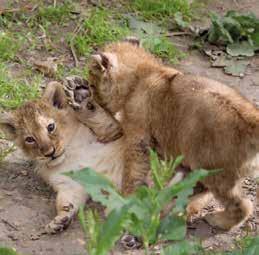

It’s the countdown to 2026, the year of our 200th anniversary, and we’re asking you to enter your memories into our History Hive. We want your old photographs, your shaky video footage and your ZSL memorabilia to help us celebrate what 200 years of ZSL has looked like for the people who have made it all possible. We’re also inviting people to contribute to an oral history archive, to help us gather personal experiences of ZSL over the years. The History Hive will form part of the bicentenary celebrations at both Zoos, alongside exciting exhibitions, talks, trails and other activities about our 200-year history. For more info, visit zsl.org/historyhive
ARCHIVIST NATASHA WAKELY AND OBAYSCH (JOHN GAWEN, 1855), LONDON
ZOO’S FIRST HIPPOPOTAMUS © PA


Earlier this summer, Reptile and Amphibian Zookeeper Unnar Aevarsson flew to Ghana to assist with the rescue of the Atewa slippery frog.
“The Atewa slippery frog is only found in one mountain range, the Atewa, in south-eastern Ghana,” explains Unnar. “We got word that plans for a largescale mine in the mountain range could put the entire species at risk, and we knew we had to do something.”
Unnar journeyed to Ghana to help set up an emergency amphibian facility and train technicians to care for the Critically Endangered frogs. Once there, he joined forces with ZSL conservationist Caleb Ofori-Boateng – who was responsible for discovering the species only three years previously – and Herp Conservation Ghana.
“Over two days of searching murky streams in dense rainforest we managed to successfully find 11 tadpoles, who have now been safely moved to the facility. These will help us build a back-up population, should the worst happen to the species in the wild, and learn more about the species.”
The Atewa slippery frog was declared a new species in 2021, by Caleb, making it distinct from the Togo slippery frog. It was given the scientific name Conraua sagyimase, to honour the local Sagyimase community, who had been instrumental in their conservation.
However, their survival is now under threat from plans for a large-scale bauxite mine in the area, likely to destroy the streams that the frogs live in. Bauxite is a reddish ore that contains high levels of aluminium – an important metal that’s used in everything from cars and spacecrafts, down to toasters and drinks cans.


New mums Mjukuu and Effie, who gave birth to infant gorillas three weeks apart earlier this year, are in it for the long haul. That’s because young gorillas have one of the longest childhoods in the animal kingdom. Unlike most species, who learn to crawl, walk, swim or fly as quickly as possible, gorillas hang onto their mum’s tummy from birth and start to ride on their back from about eight months up to three years old.
Even then, a young gorilla will still rely on mum’s support for years to come. Juveniles spend a lot of time playing and learning from the rest of their troop, only fully maturing in their teens. This is central to their success as a species, and a mark of how complex gorilla society is, says Primate Zookeeper Rhiannon Pritchard-Wood. “Having such a lengthy childhood allows them to learn the dos and don’ts of being a gorilla – like how troop hierarchy works, and how to communicate with facial expressions and body language.”
“Our two are just approaching six months old, so they’re firmly glued to Mjukuu and Effie – where they have a great view of the world!”
To celebrate the flurry of births at London Zoo this year, we’re looking at the different ways our babies approach life – and what their parents have in store!
Gorilla infant 1-2
Litter size
2KG
Birth weight
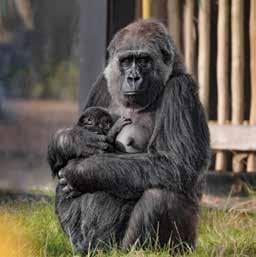
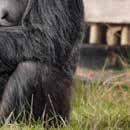
Young gorillas also have a major advantage over most animals – they have a huge silverback gorilla for a dad!
“When they were first born, Kiburi stayed close to keep a watchful eye on the infants. Silverbacks tend to be handsoff parents – their role is protecting the group as a whole –but we have seen a few tender interactions between Kiburi and his offspring,” adds Rhiannon.
Go to Gorilla Kingdom to fall in love with our two adorable arrivals.

Lion cubs
1-4
Litter size
1.5-2KG
Birth weight
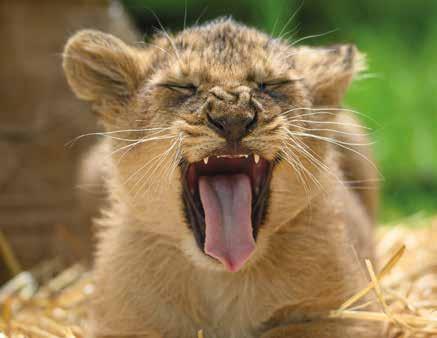
There’s a reason why lionesses, like our Arya at London Zoo, have a reputation as fierce mothers: life for lion cubs in India’s Gir Forest is full of dangers. Before giving birth lionesses leave their pride and find a safe place to give birth, often in dense bush, and raise their cubs alone for the first few months.
Male lions, like our cubs’ dad Bhanu, are less involved in raising cubs but they perform another vital role – protecting the pride’s territory from other lions who might try to kill the cubs. “Bhanu is quite content relaxing on his favourite platform but has shown some interest in the cubs,” says Predator Zookeeper Amy McKillop. “He has called gently to the cubs, and he’s very calm and peaceful around them.”
Inside mum and dad’s protective bubble, a lion cub’s life is about one thing: play. When they’re not snoozing (which




lions also do a lot), the triplets spend their time chasing, wrestling and pouncing on each other. It isn’t all for fun though – play is an important way cubs build their physical skills and the social bonds with their siblings.
“Our three lions are the most playful trio you could hope for,” says Amy. “Lion mums are experts at herding cats, and Arya’s no exception. Looking after triplets would be enough to drive anyone a bit mad, especially for a first-time mum, but she’s patience personified.”
Head to Land of the Lions to meet our lion cub triplets Mali, Syanii and Shanti.
Next page: mountain chicken froglets and penguin chicks


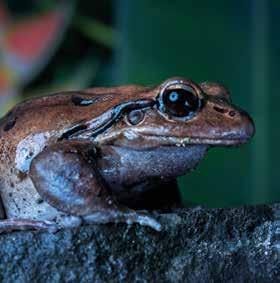
VERY IMPORTANT BABY
These frogs are Critically Endangered

Clutch size
If you thought amphibians didn’t make the most caring parents, think again! After the male has dug a burrow, mum goes into the nest chamber and excretes a liquid that she then whips up into a nest of bubbly foam (think: bubble bath) with her feet. She lays her eggs in the foam, which helps to keep the eggs safe and moist.
“The parents are incredibly protective,” says Zookeeper Jamie Mitchell. “We do weekly checks on their nests to check everything is going well, and the parents will often headbutt your hands if you get too close.”
After a week or so, the eggs hatch into tadpoles. Mum returns to the nest every day to feed the tadpoles her own unfertilised eggs – which might sound odd but isn’t very different from mammals drinking milk. “These aren’t like tadpoles you find in your garden pond though – they can reach 15cm long!” says Jamie.
Once the froglets have lost their tadpole tail and transitioned into frogs, they venture out of the nest and into the wider world. Mountain chicken frogs grow up to 20cm long, and their diet even includes tarantulas and small snakes. In fact, they are the apex predator on the Caribbean islands of Dominica and Monserrat, where they originate – though they are now incredibly rare, with less than 50 thought to survive.
Six mountain chicken froglets were born in March this year. Find our froggy family in the newly opened Secret Life of Reptiles and Amphibians.
Penguin chicks
100G Birth weight 1-2
Clutch size
If you thought our mountain chicken frogs’ foam nests were unusual, penguins have gone one step further. While we provide our penguins with cosy nest boxes, the Humboldt penguins found in Chile and Peru tend to burrow holes in their own guano (that’s penguin poo, to you and me). It might sound a bit gross, but it’s actually quite practical – guano makes excellent building material, especially on windswept beaches with little else on offer. Penguin parents share the burden of raising their chick, with both mum and dad taking it in turn to keep the egg warm while the other heads to sea to feed. Once the chick hatches they are fed a regurgitated fish milkshake – something our keepers recreate for any chicks we hand raise (but thankfully they use a blender)!
Every time their parents enter the water to find food for their chick they must dodge hungry predators, like seals, sharks and whales, as well as fishing nets. So this might make them one of the bravest parents.
“When penguin chicks hatch, they have only one thing on their mind: food!” says Zookeeper Jessica Ray. “Their job is to grow as big and strong as they can, as quickly as they can, so they’re constantly nagging mum and dad for more food.”
Penguin chicks aren’t the same either, says Jessica. “Some will be big, bold and brashy, while others will be a bit more timid. And some are total water babies, while others will prefer to catch some rays on the beach.”
Head to Penguin Beach and look our for our chicks sunning themselves on the beach or swimming in our nursery pool.


ZSL’s animal behaviour specialist Jim Mackie gives Wild About the low-down on a life training the animals at London Zoo
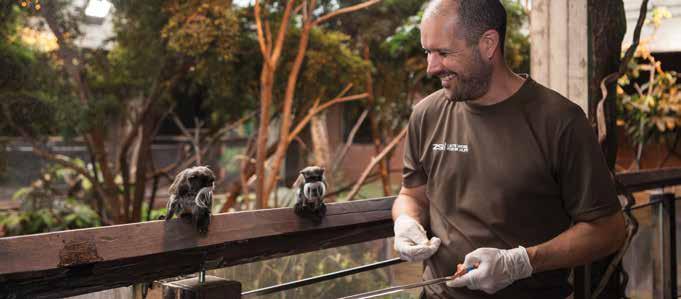
MY JOB IS TO…
Help our animals live the fullest and most enriched lives they can. A lot of my time is spent supporting the healthcare of our animals. Most of us don’t enjoy going to the doctor, but you’d enjoy it even less if you had to be anaesthetised each time. I work with our zookeepers to train our animals to participate in routine veterinary exams without anaesthetic, like having their heart listened to, or letting us take blood samples by hand.
Moving home is a big deal for anyone – everything is unfamiliar, and we can take time to get used to it. For the opening of Secret Life of Reptiles and Amphibians at London Zoo, I worked with our zookeepers to develop a programme for easing our animals into their new homes well before visitors arrived. And at Monkey Forest at Whipsnade, my colleagues are monitoring the Sulawesi macaques every day to make sure they continue to settle well into their new home.
I was 14 when I started training birds of prey, so when I joined London Zoo in my twenties I already had a massive interest in animal behaviour. My first job at the Zoo was training animals for our educational
demonstrations, and I got to work with animals like parrots, lemurs and small cats. It was incredible.
But I quickly saw how beneficial animal training would be for their care and medical check-ups. I trained one of the lemurs I was working with to let a vet inject his medication by hand, and I thought “Why aren’t we doing this with other animals at the Zoo?” Now, a vast array of our animals have training programmes, even fish!
WE TREAT ALL OUR ANIMALS AS INDIVIDUALS…
And, like people, animals all learn in different ways. If I wanted to train two different tigers, each tiger would need a different approach based on their personality and past experiences. One might prefer a calm and quiet training environment and make steady progress through lots of repetitions, while the other could prefer a more energetic training session with lots of variety and excitement.
Might be our Chinese giant salamanders. They’re such unusual animals – and they rely on vibrations a lot because their eyesight is so poor. We trained the salamanders to voluntarily enter and exit a crate, so
I trained one of the lemurs I was working with to let a vet inject his medication by hand that they could be transported to their new home. It’s almost certainly the world’s first crate-trained Chinese giant salamander!
Was a male hornbill named Jazz that I worked with 15 years ago at London Zoo. Hornbills have huge bills, a bit like a toucan, and are extremely clever. I will never forget him – I was able to train him every day, applying everything I’d learned about behavioural science and building such a bond of trust.
For a career working with animals. If you’re able to, volunteer anywhere that will take you – dog kennels, farms, veterinary clinics. I even worked at a pig farm!
Working with animals isn’t for everyone either – it means working weekends, hard graft and a lot of picking up poo – so it’s a good idea to give yourself the chance to test it out.

G O O N


to minibeasts this summer
1.
Rocks, logs, pots – even that toy tractor left in the garden last autumn – are gold mines for bug hunters. They provide shelter from harsh weather and large predators (like birds and hedgehogs) to slugs, beetles, centipedes; even frogs or newts. Remember to put everything back where you found them (including the insects).
3. CREATE YOUR OWN LIGHT SHOW
Some insects, like bugs and moths, only come out after dark. You can encourage them by building a light trap in your garden or local green space. Hang a white sheet over a clothesline or branch, shine a torch onto the sheet and watch as moths and bugs arrive. Moonless, muggy nights in July
2. BUDDY UP WITH A BUDDLEIA
Be gentle when handling any animals, and avoid picking up amphibians.
Buddleia is nicknamed the ‘butterfly bush’, and for good reason. Find one on a sunny day and watch for 10 minutes, you’ll see lots of flying insects. We have plenty of buddleia at Whipsnade Zoo; they are a favourite of the hummingbird hawk moth – a dramatic-looking moth that feeds in midair just like a hummingbird.
4. RECORD YOUR FINDINGS

Record findings from the garden or further afield with iNaturalist. This magnificent app identifies the bugs in your photos then adds them to a national database, helping conservationists understand the health of the UK’s invertebrates. Before you know it, you’ll be on the hunt for rare

“Take only photos, leave only footprints” The bug-hunter’s motto
Is there a more iconic British Stag beetles get their name from the male’s iconic jaws, which look like stag antlers. They spend most of their lives as larvae inside rotting wood but, after several years,
Not many people realise that we have scorpion-like animals right here in the UK, in our woodlands. The tiny bugs are too small to threaten us and they don’t have a stinging tail – instead, they inject their prey (ants and lice) with venom through their pincers! Look for them in leaf litter and log piles.



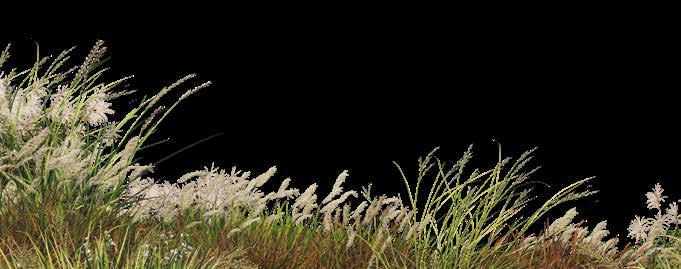

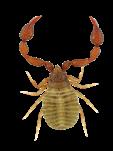

For wildlife to succeed, local people need the tools and support to live happily alongside them. In southern Kenya, on the outskirts of Tsavo National Park, we’re working with people like Monica Musyoki to help them coexist with big cats.
Living on the edge of a national park might sound like the dream for wildlife lovers, but in reality, sharing your farm, your back garden and the local park with the occasional leopard or elephant is real challenge.
“Honestly, I viewed them as enemies to progress,” Monica chuckles. “They used to go away with our hard-earned assets – our livestock!”
A farmer living on the edge of Kenya’s Tsavo National Park, Monica says that leopards, hyena and other predators would regularly sneak into her community and take livestock. “We had to stay alert all night so we could chase away predators in case of attack,” explains Monica.
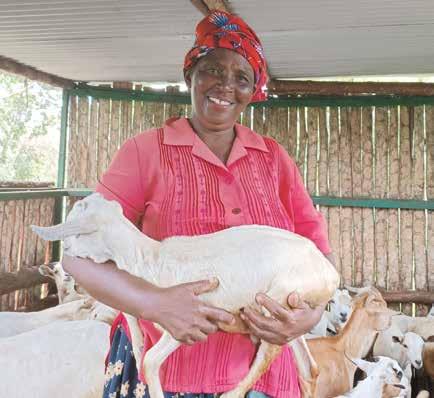
We had to stay alert all night so we could chase away predators in case of attack
financial services. Community banks are a way to change that: they are run by local people, community members save a little money each month, and the community votes on who to lend money to each month. It gives everyone a chance to improve their businesses and homes.
and we’ve learned how animals contribute to our country’s economy.”

For the last three years, our conservationists have been working in Monica’s village, Kitheini – supporting the building of predator-proof enclosures (known as ‘kraals’) for livestock farmers and helping to set up a community bank that Monica now chairs.
Unlike the UK, where banks are found on every high street, many people in developing countries have little access to

In Monica’s case, she chose to take out a loan to expand her flock of goats. “Having the kraal motivated me to take out a loan to buy more goats, knowing they will be safe,” she says. “I purchased a nanny goat, and she has already given me three baby goats!”
Monica lost her husband in 2000 and is now head of her family’s household – which she shares with her daughters and sons. “I finally feel financially secure – I can easily access funds to meet my basic needs as well as cater for emergencies in my family.”
Without the fear of nightly predator attacks, Monica says she no longer sees wildlife as an enemy either.
“My attitude towards wildlife and conservation has greatly changed,
Meetings organised between Monica’s village and the Kenya Wildlife Service have also given local people the chance to enter and explore the national park – some of them for the very first time – and learn about their country’s wildlife. “I love elephants,” she adds. “I admire how huge they are, and it’s through tourism that they can help our economy grow.”

This project, and others across Africa and Asia to help people live safely alongside big cats and other wildlife, was initially made possible by the generosity of donors to our ‘For People, For Wildlife’ appeal in 2019 – supported by the UK government. By giving people the support they need to coexist with their local wildlife, we can create a world where wildlife thrives. Donate to support our work at zsl.org/donate

WHIPSNADE ZOO
20 JULY – 3 SEPT
Get in the swing this summer with a visit to Whipsnade’s newly opened Monkey Forest, home to our troop of Sulawesi crested macaques (read more on page 15). We’re celebrating Asian species across the Zoo this summer, with giant games and crafts. On weekends look out for special activities, from Indonesian dancing and puppet theatre to a draw-along session with beloved children’s author and illustrator Rob Biddulph.
LONDON ZOO
25 JULY – 2 SEPT
This summer the Zoo will be celebrating all things number two. We’ll be building our very own Pooseum on our main lawn, where you’ll be able to learn about the wonder of poop and inspect soily samples from over 100 amazing species. Visitors will also help zookeepers in The Great Poo Mystery, a trail across the Zoo inspired by the muchloved children’s book, and take part in games like Poo Bingo and Who Did This Poo. 3

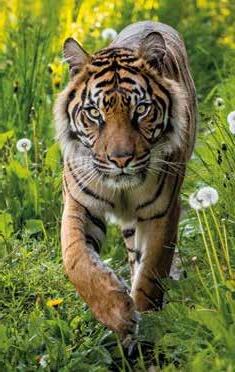
Nobody rocks stripes quite like the tiger. This International Tiger Day we’re celebrating these cool cats with special activities for you to get your claws into: talks, competitions, quizzes and crafting. Learn about what makes the tiger such a successful feline and find out how we’re protecting them in the wild.
Celebrate the Great British summer with a trip to our Zoos, where we’ll be holding events and experiences to entertain the whole family. Pop our dates in the diary so you don’t miss out and keep an eye on member emails for updates and timings
WHIPSNADE ZOO EVERY THURSDAY MORNING
Get your steps up by joining one of our Walks of the Week at Whipsnade Zoo. On a 90-minute stroll, you’ll learn from one of our experts about a range of topics, from conservation, to what it’s like behind-the-scenes working with our animals, to the British wildlife found at Whipsnade Zoo. Walks follow a different theme, are held every Thursday at 10.30am, and start from the Visitor Centre. For more info, visit whipsnadezoo.org/ walk-week

Tear me out and stick me next to your calendar or on the fridge

LONDON AND WHIPSNADE ZOOS
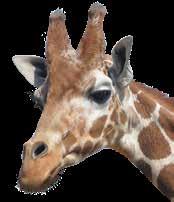
LONDON ZOO
Got the love for our longnecked wonders just like ZSL Member Josh Widdicombe (on page 14)? Learn what it’s like to look after London Zoo’s biggest animal on our Giraffe Keeper experience, where you’ll get introduced to our herd, take part in cleaning and food prep, and even have the opportunity for a hand feed. Gold Members, Patrons and Fellows get 10% off all Zoo Experiences. Visit londonzoo. org/experiences for more information.
5 6
26 OCT – 3 NOV
Get ready to brave some spooktacular Halloween happenings at our Zoos this October half-term. Youngsters will take part in pumpkin decorating, creepy crafting, party games – and we’re encouraging all little devils to dress up in their spookiest costumes. We’ll also be running terrifying talks and devilish demonstrations, fit to send shivers up the spines of the whole family.

Comedian

London Zoo isn’t just a haven for endangered species from around the world, it’s a safe haven for parents too – says comedian and ZSL Member Josh Widdicombe.
“A lot of things you go to with kids can be a bit intense. You come out feeling punch drunk,” says Josh. “The Zoo feels like a much calmer way to spend the day with a child. It’s not too compact or too busy. And it’s guilt free because you can write it up as educational without them realising.”
“It’s rare to do things with your kids that both of you really enjoy. In fact, we often come to the Zoo with other parents and joke to each other, ‘wouldn’t it be lovely to just come here on our own’.”
Josh, who grew up in Devon, didn’t encounter the Zoo until he became a parent and was looking for something to do with his daughter. “The interesting thing is that, when you first take a child to London Zoo, it’s lost on them how unlikely it is that there’s a giraffe in central London. They’re not as impressed as they should be because, to them, it makes perfect sense.”
Thankfully, despite initially playing it cool with the giraffes, the family
“It’s like going to the National Trust, except it’s full of animals that blow your mind.”
quickly became ZSL Members and the giraffes are a firm favourite. “I absolutely love the giraffes, they’re an insane animal,” says Josh. “They’re so outlandish, so absurd. You don’t think about any other animal’s neck but they’re just all neck.”
It’s clear that the Zoo isn’t just a parent paradise for Josh – it’s also a place to enjoy and relax after a busy week. “My job is quite fast and exciting at times, and scary at others. And weekends are 1,000 miles an hour when you have kids. So watching animals go about their lives is a lovely way to spend a Sunday,” he says. “It’s like going to the National Trust, except it’s full of animals that blow your mind.”
Having children has also made him think differently about wildlife and the planet, admits Josh. “I’ve always thought animal conservation is very important, but now I’ve become more panicked about what we’re passing on. Being part of ZSL is a pleasant reminder that it’s not all hopeless.”
Josh says he’s excited to see his
children (he now has a young son too) grow up together with the Zoo. “There’s a three-year age gap, but it’s something they can do together. It’s a good uniter of generations, and it’s one of the few places where you don’t think ‘well we won’t go to this anymore because they’ve hit this age.’ “We had my daughter’s sixth birthday party at the Zoo this year and we had a brilliant time. You’re always looking for something to make a birthday feel memorable and special for your child. I only fear that we’ve set the bar too high, but that’s a problem for next birthday.”
For more parenting tips from Josh and fellow comedian Rob Beckett, listen to podcast Parenting Hell wherever you get your podcasts.
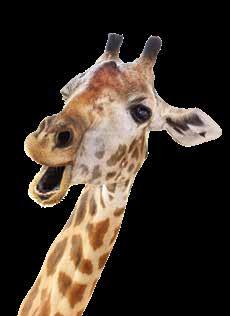
Our Sulawesi crested macaques are settling into life in Whipsnade’s Monkey Forest. Zookeeper Patrick Lally walks Wild About through their daily routine


7:30AM WAKE UP 8:30AM INTO
The macaques are usually awake and eager for their breakfast when we arrive in the morning. For their first course we give them special pellets (a bit like your breakfast cereal) that are made for leaf-eating primates and enriched with all the nutrients they need to stay healthy. While they’re munching away we do a quick headcount to check all 12 macaques are in attendance and then head outside to scatter the rest of their breakfast (sweet potato, beans, sweetcorn and other pulses) around the forest.
By the time we walk back with the empty food buckets there are a lot of excited noises – the troop are ready to go! No one wants to be left behind (or miss out on the food) so the macaques usually move outside as a group, with the highest-ranking members going first. Kato, our dominant male, goes first followed by Koko, his brother and second-in-command. Kato is a huge male – almost double the size of our females – and, like all the best leaders, he manages to keep his troop in order without doing very much. In fact, Kato is content to let the females groom him, occasionally yawning to show his long teeth if he needs to remind anyone who’s boss, while Koko goes on a patrol to check his territory is safe.

Look out for our macaques smacking their lips together at each other or their zookeepers. Lip-smacking is generally a greeting in macaque society, or used to express friendship or excitement.
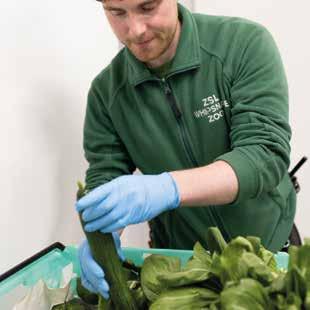
In primatesweather,hotthe get icy treats to cool down, like frozen beetroot juice, or fruit tea. There’s also three ponds to cool down in. Unlike chimps, who can’t swim, macaques love the water.
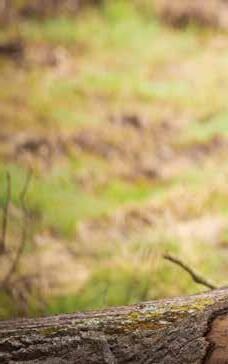

4:30PM DINNER TIME 5:30PM BEDTIME
We bring them in for their final meal – more vegetables and leaf-eater pellets, or even some porridge smeared on branches – just before we finish for the day. Even after a day of foraging they’re excited about more food, though they’re remarkably patient while they wait for us to finish preparations. They usually head straight in, in single file to warm up under the heat lamps, getting a bit more grooming in while they wait.
With full tummies and the sun falling, it’s not long until they start dropping off. They tend to sleep individually, or in small groups – and Kiwi will often cuddle up to her mum, Keira. They don’t often lie down – instead, they tend to sleep sitting up, head resting on a shoulder and their feet on a branch to keep themselves in position.
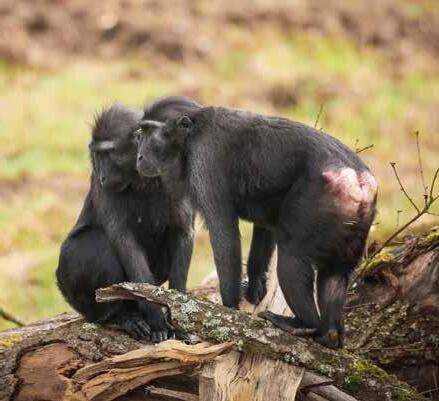
Kato and Koko might sit at the top, but it’s the females who are the glue in macaque society. Maluku, one of our highest-ranking females, keeps everyone together, spending her time wisely between males and females to create those important social bonds. You’ll often see her offering a scratch to one of the males, or casually extending her body towards others to encourage them to give her a tickle. Maluku is also Kato’s favourite – he has a real crush on her, and we’re hoping she’ll have babies soon.
But the darling of the group (and my favourite – shh, don’t tell the others!) is Kiwi, our youngest and smallest macaque. The group adore her, despite how noisy and mischievous she can be, putting up with all of her demands to play (even when they would much rather relax). Just like in human society, a baby macaque is a joyous thing for the whole troop and it’s clear how much affection and protectiveness they feel for her.
Our macaque troop share their home with another Indonesian resident, the lowland anoa. Anoa are the smallest wild cattle species in the world, which makes them perfectly adapted to moving through Indonesia’s dense rainforest. And what they lack in size, they make up for with sheer character, says Patrick. “Our two anoa, Niko and Anya, seem to be quite interested in the macaques, often going in close for a sniff,” says Patrick. “The macaques have been a bit more shy – anoa might be small but they are still 10 times the size of a macaque. However, they did enjoy raiding the anoa stable for food when they were first introduced to each other!”

Macaques spend 60-70% of their time foraging, so their hunt for the tasty vegetables we hide in the morning, or even the worms and beetles that they find in the ground at Monkey Forest, never really ends. And because there are so many fallen trees, ponds and leaf piles, there are plenty of places to check! But when they’re not foraging, our troop love to groom each other. In fact, Sulawesi macaques are known as the world’s most affectionate monkey and use grooming to strengthen the bonds in the group. Macaques take grooming very seriously, and will use their fingers to check for tiny insects. And if there’s ever a falling out, one of the arguing macaques will normally extend the olive branch by offering the other macaque a grooming session.

Did you know that the Socorro dove is so rare, that three London buses could seat their whole species?
Our Zoos are home to some very, very special animals – like the Socorro dove – that are found almost nowhere else. These are animals that have disappeared from the wild altogether and are now only cared for in Zoos like ours.
We work with other zoos to breed these animals – known as ‘Extinct in the Wild’ species – and, for some, we’re already trying to return them to the wild. Last year we proved it could be done: scimitar-horned oyrx (pictured below) officially returned to the wild after a 10-year reintroduction programme.
These species are so rare that, in cases like the Socorro dove, if you booked each one a seat on a 400-person jumbo jet, the plane would still be half empty.
We are such a successful species that it’s hard to imagine belonging to a species with just a few hundred individuals. To help put you in the shoes of an Extinct in the Wild animal, let’s imagine your whole species wanted to get together for a day out in London? Where could you all go?
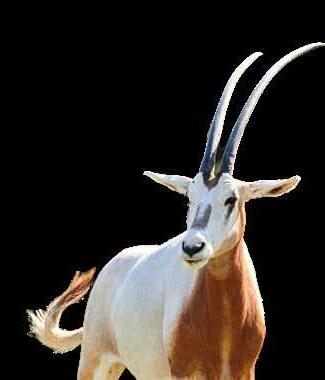
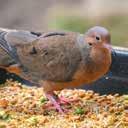
12,000
188
For the Socorro dove, whose home on the Mexican island of Socorro was made uninhabitable when domestic sheep arrived and ate all their habitat, we recommend taking in the city in a trio of London buses (capacity 80). FIND ME AT LONDON ZOO
Our 10 species of Partula snails, who disappeared from French Polynesia after the accidental introduction of predators, would have no trouble finding seats at Wembley Stadium (capacity
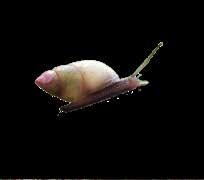
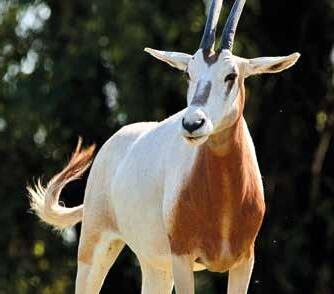
135
SIHEKS
For the rarest species, the sihek (or Guam kingfisher) we recommend travelling in style in London taxis (capacity 5). A fleet of just 27 taxis could whizz the whole species around London’s major landmarks.
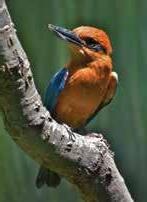

1,000 VIETNAM PHEASANTS
For the Vietnam pheasant, which has all-but disappeared from the wild, a visit to Westminster Abbey (capacity 2,200) would comfortably seat the whole species and leave room for other guests. FIND ME AT LONDON ZOO




7,000 PERE DAVID’S DEER
Reintroductions are already underway across China of Pere David’s deer. Two thirds of the species could see a concert at the Albert Hall (capacity 5,272) but the rest would need to wait until the next night. FIND ME AT WHIPSNADE ZOO
x11/2
While you won’t find the sihek at our Zoos (or anywhere in Europe), you might have seen stories about them in the news. Siheks disappeared from the island of Guam in the 1980s following the accidental introduction of tree snakes (that eat sihek eggs). Now only 135 birds survive in US zoos and, for the last two years, our bird keepers have flown to the US to hand-raise sihek chicks and help grow the struggling population. We’re also part of a project to introduce the sihek to Palmyra Atoll. The uninhabited island chain in the Pacific will give the kingfishers vital space to breed in the wild ahead of an eventual reintroduction to Guam.
To read more about our Extinct in the Wild species, and to learn about how we’re returning animals like the sihek and Partula tree snails to the wild, visit zsl.org/extinctinthewild

1,000 MEXICAN PUPFISH
We care for three species of Mexican pupfish that have disappeared from their native streams and ponds. Together, they would fill the London Eye (capacity 800) – though a few would have to wait their turn. FIND ME AT WHIPSNADE ZOO

While human Olympians prepare to compete in Paris this summer, we look at some of the animal athletes who would win gold every time
African wild dogs are built for speed and agility, and will regularly chase their prey over several miles. We think they’re in with a chance of winning gold in the 5,000 metre race, but we need your help steering them around the other competitors to the finish line.
Some of the creatures at London and Whipsnade Zoos have applied for the Animal Olympics, but their applications have got mixed up. Can you match the animal with the correct competition?
Why was the cat disqualified from the hurdles? He was a cheetah
DID ZebrasKNOW?YOU are thought to have the strongest kick on the planet (making them excellent at Taekwondo)
ANSWER: D,A ,C,B
Where better to practise for the gymnastics than among the trees and vines of Asia’s rainforests? Gibbons, like our pair at London Zoo, rarely descend to the ground, preferring to move everywhere by swinging. They have extra long arms, which give them the ability to swing faster and reach further, and hookshaped hands perfect for grasping onto branches. They even have specially adapted shoulder joints. All these adaptations mean they can clock up an astonishing 50kmph swinging through the air!
Send us a picture of your colourful creation to be in with the chance of winning a one of our Junior Zookeeper polo t-shirts from the ZSL shop! Ask a grown up to take a picture of your entry and email it to us at wildabout@zsl.org with your name, age and postal address by 1 October 2024. Email the same address for full terms and conditions.

King Charles continues two-century tradition as ZSL’s Royal Patron

In May this year we were delighted to confirm His Majesty King Charles as ZSL’s Royal Patron. He continues an unbroken tradition of reigning British Monarchs as our Royal Patrons, stretching back to King William IV in 1830.
Often described at the UK’s first ‘climate King’, King Charles has spoken up for nature his whole life, championing conservation and the importance of protecting the environment. He has presented at international conferences, like the United Nations and the European Union, urging for more action on climate change. He has established and supported several initiatives designed to help sustainable enterprise and even directed the transition of many Crown-owned estates to renewable energy and organic farming.
At ZSL, we can claim a small part in the King’s passion, having first welcomed him as Prince on a visit to
London Zoo to see Brumas the polar bear cub – when the Prince was just one year old!

He returned on several occasions thereafter: during one visit he met Sir David Attenborough (then a presenter on London Zoo’s television programme Zoo Quest) and Cocky the cockatoo, and at 13 years old he joined our Exceptional Young Zoologist Club, which aimed at getting children interested in Zoology. He visited on more serious business in 2013, when he toured Tiger Territory and met with our conservationists to talk about tackling the illegal wildlife trade, and became our Vice Patron in 2014.
King Charles’ support of ZSL not only continues that of his mother, the late Queen Elizabeth II, but his late father, HRH Prince Philip. The Duke of Edinburgh served as ZSL’s President between 1960-1977, and launched our world-leading scientific wing – the Institute of Zoology – where we now have over 150 researchers working on





solutions to some of today’s biggest conservation challenges.
He has also ensured his family have a deep respect for wildlife too. Prince William leads the United for Wildlife foundation, devoted to ending the illegal wildlife trade.
We are proud to work in support of King Charles’ vision, and honoured to have such a champion of nature as our Patron.
HM King Charles has a Critically Endangered treefrog from Ecuador named after him, to recognise his commitment to conservation: Hyloscirtus princecharlesi, otherwise known as the Cuellaje stream treefrog.




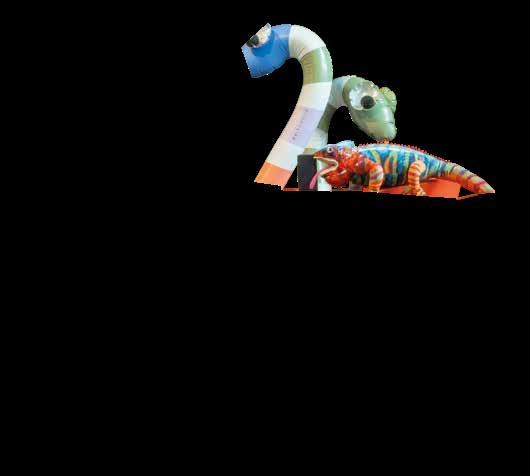
DON’T FORGET!
Get reptile-ready and amphibian-awesome this summer to celebrate the opening of The Secret Life of Reptiles and Amphibians at London Zoo. All of the profits support the care of our animals and our work around the world. shop.zsl.org
Take your pool game to the next level this summer with our inflatable snake noodles (set of two for £20) and crocodile float (£35). Both are made from nontoxic PVC and come with a repair patch to ensure any unintended snags don’t dampen your summer.
What story isn’t better with a giant lizard? Our crocodile and snake puppets (from £25) will make the perfect addition to your little one’s home theatre, inspiring countless daring tales and legendary escapades. And look out for our bespoke reptile cuddly toys, ideal for the explorer in your life. All of our soft toys feature 100% recycled inner stuffing.
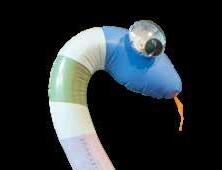
When summer showers strike, retreat inside and create your own animal kingdom with one of our play sets. Playmobil’s Dinos playsets (from £25) take children on an exciting adventure uncovering the mysteries of prehistoric giants – and what’s more, they’re made from 80% recycled plastic. And our animal jigsaw puzzles (£18 each) provide a timeless educational and engaging activity on a rainy day.
Gold Members, Patrons and Fellows get 10% discount in our shops and on experiences using code MONGOOSE10
Don’t leave the house without your handy tote bag (£6) and drinking bottle (£12). Our new reptile and amphibian bottle will let you display proudly your love of our cold-blooded companions to fellow travellers, while helping you to stay hydrated and ditch the single-use plastic. Our tote bags, which launch in the autumn, are made from five recycled plastic bottles, and are available in sloth, giraffe, tiger, penguin and flamingo.




